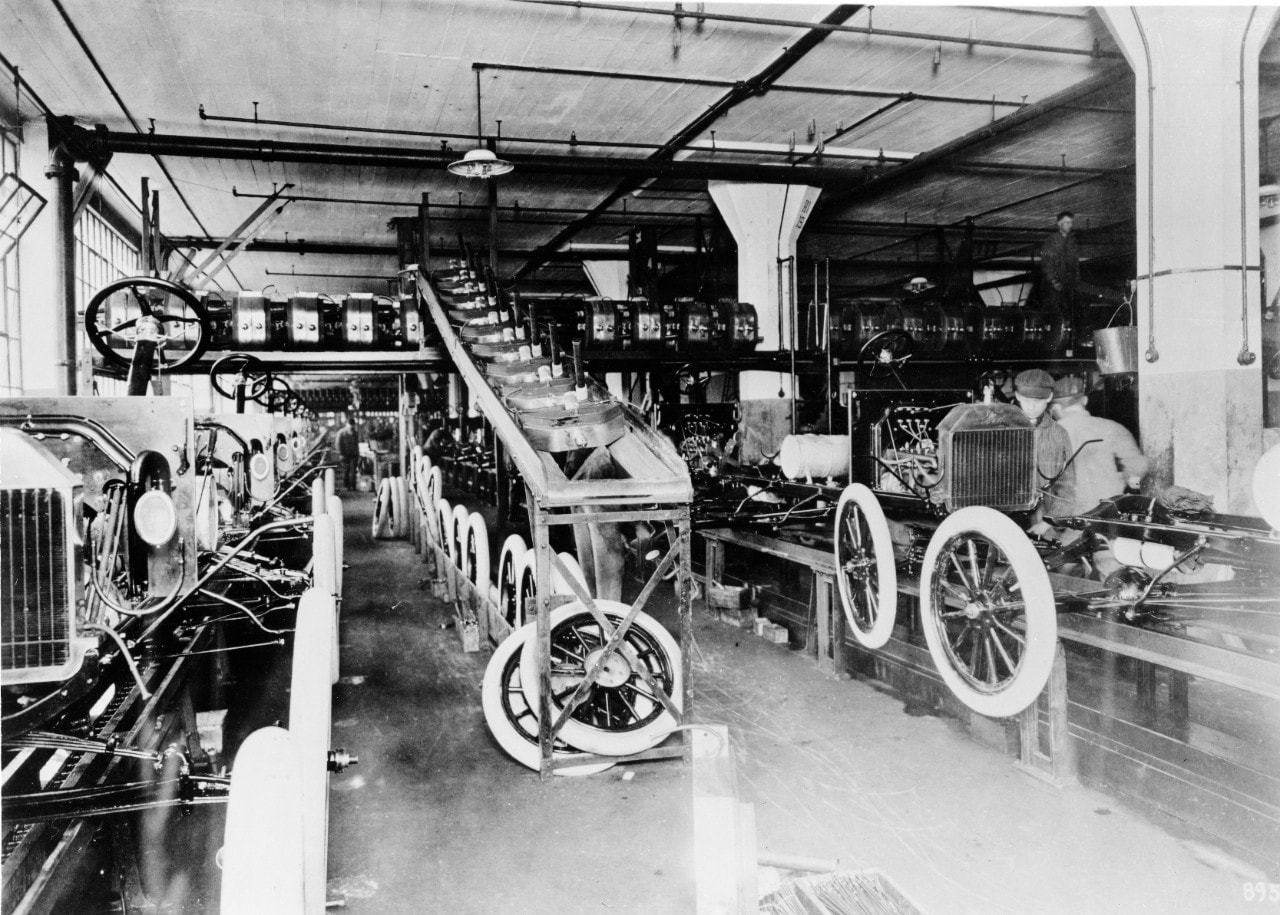
We all know it's an urban legend by now. No, Henry Ford didn’t invent the automobile – he simply perfected it to such a degree that he might as well have.
That said, the founder of Ford Motor Company didn’t lack for game-changing inventions and innovations. From Henry Ford’s early twentieth century run that established modern practices of mass production and employee benefits, to newer applications such as blind spot technology, Ford has always lived on the cutting edge.
Today, All American Ford takes a deeper look at the five most consequential ways Ford has changed the landscape of the auto industry.
Moving Assembly Line & Mass Production
Automobile manufacturing would never be the same following Ford’s implementation of the moving assembly line. By using a conveyer belt, Ford assembly plants were able to efficiently move the product to the worker, rather than having employees scramble about facilities. After much trial and error, the process was perfected at the Highland Park assembly plant in 1913. Soon, new automobiles were being fully assembled in under two hours.
In addition, Ford introduced standardization, which reduced production costs and increased efficiency by utilizing standardized parts that could be used on different models.
Model T
The original game-changer of the auto world. The Ford Model T was mass produced from 1908 to 1927. In that span, it established itself as the first mass-affordable automobile, resulting in car travel becoming available to middle-class America. Thanks to savings stemming from mass production, the average price of the Model T dropped from $780 in 1910 to $290 in 1924 – a truly staggering number when adjusted for inflation.
Thanks to the moving assembly line and its interchangeable parts, the Model T (also known as “the Tin Lizzie”) became the most ubiquitous vehicle in the world by an absurd margin. By the early 1920s, more than half of registered automobiles throughout the world were Fords, with over 15 million Model T’s built and sold during that span.
$5 Wage / 5-Day Workweek
When Henry Ford proposed in 1914 that all Ford employees be compensated at five dollars per workday, it sent a shockwave through the working community – and for good reason. Five dollars per day translates to $153 per day by today’s standards, after adjusting for inflation. That’s good for $19 an hour, well above 2023’s federal minimum wage of $7.25.
Then, in 1926, Ford introduced another now-standard workplace practice with the five-day workweek. Though it was conceived with the expectation that worker productivity would increase if given more leisure time, Ford also believed giving workers more time to purchase and consume goods would be good for business. The idea passed the test of time; nearly a century later, we’re still looking at ways to further expand on Ford’s vision and bump the workweek down to four days...
The Trimotor Plane
One of the great “What If’s” in automotive history is the Ford Airplane Division, which shut down in 1933 due to the Great Depression. When Ford entered the aviation business during World War I, all they did was introduce the Trimotor Plane, an aptly-named, three motor plane that became the United States’ first successful passenger airliner.
You can’t help but wonder what Ford could have further accomplished in the aviation space if they hadn’t been forced to cut bait in the 30’s. Unfortunately, in this case, the sky was literally the limit.
Blind Spot Monitoring
For decades, drivers changed lanes with the aid of three rear mirrors and their own intuition. That changed with the introduction of Ford’s BLIS (Blind Spot Information System). BLIS is responsible for detecting vehicles in your blind spot and alerting you to their presence. It has since paved the way for a plethora of modern collision-avoidance technology.
While Volvo was technically the first manufacturer to introduce this feature to the public, Ford's 1995 concept car, the GT90, was the first vehicle fitted with modern blind spot technology. Ford unveiled its version of blind spot monitoring to a mass audience in 2009 with the 2010 Ford Fusion and Fusion Hybrid.
Reinvent Your Driving Future
Ford continues to innovate to this day and are currently focused on expanding the reach of EV technology. With plans to put over 40 EVs and hybrid models on the road within the next few years, Ford’s next step seems to be the complete electrification of the majority of its fleet.
In the meantime, thanks to our extensive inventory of new and used Fords here at All American Ford, you're sure to find a vehicle that adds a new element to your life. Let us set you up behind the wheel of a Ford today, so that you can drive confidently into tomorrow.